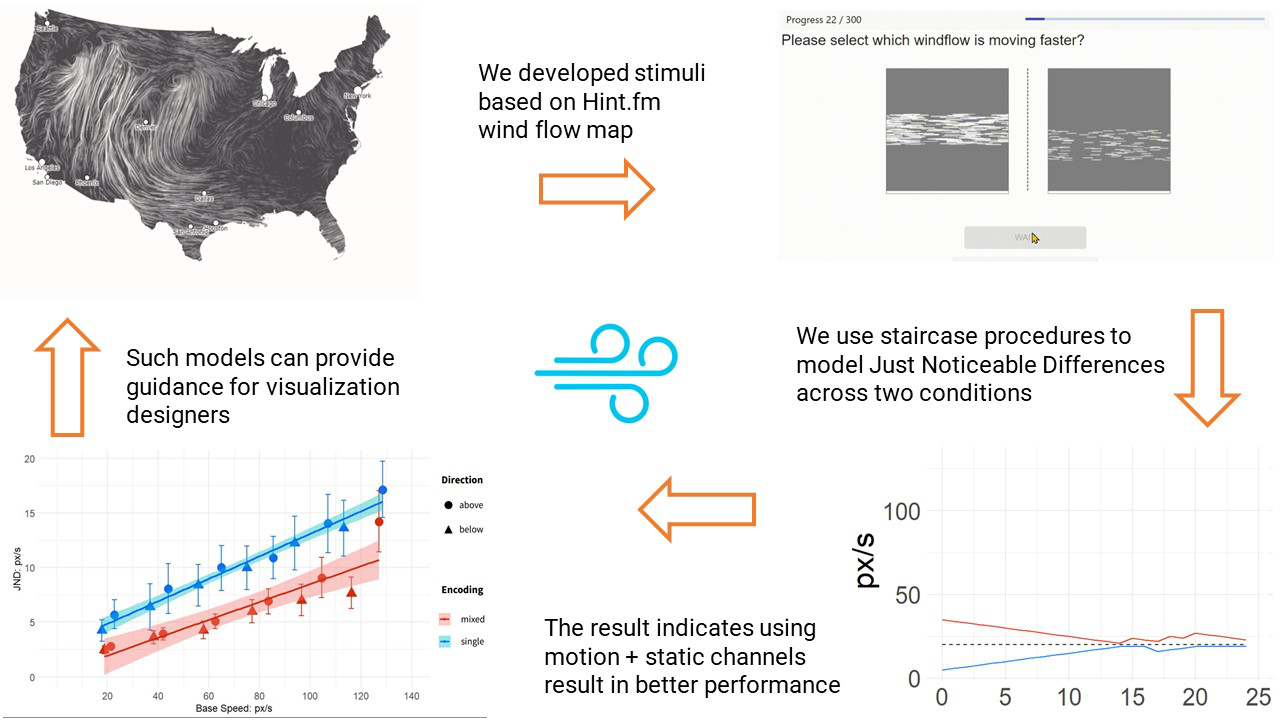Honorable Mention
Data in the Wind: Evaluating Multiple-Encoding Design for Particle Motion Visualizations
Yiren Ding, Lane Harrison
Room: 104
2023-10-26T00:12:00ZGMT-0600Change your timezone on the schedule page
2023-10-26T00:12:00Z

Fast forward
Full Video
Keywords
Human-centered computing Visualization Visualization techniques Empirical study
Abstract
Motion is widely used in modern data visualizations, serving as a means for transitioning views and as a primary channel for conveying information. Particle flow maps have become a popular means for communicating the speed and direction of wind in engaging and informative ways. Yet there is little empirical design guidance supporting the multiple encodings these maps use, such as particle speed, particle density, and color saturation. In this paper, we investigate multiple encoding wind maps using a staircase methodology to estimate just-noticeable differences for a range of speed values across visualizations with or without motion encodings. Results suggest: 1. the multiple encodings designers use are not only aesthetically engaging– they also improve speed discriminability for the average participant. 2. The speed of particle motion should be controlled under a certain range for good information retrieval accuracy. These findings contribute empirical guidance for particle motion encoding design, and lay groundwork for future investigations as motion becomes more widely used in visualization practice.